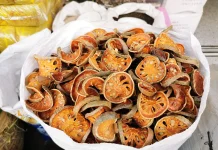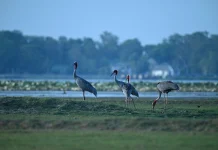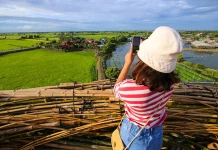A stroll through the old part of the former capital offers glimpses of the glory days of colonial architecture
“See Bagan and live. See Angkor Wat and die,” says my guide Phaphophon Chantharawattanakul, quoting British historian Arnold Toynbee, as he leads me on a stroll through the streets of Old Yangon.
“See Yangon and cry,” I retort, narrowly avoiding getting run over as we brave Yangon’s crazy traffic to reach Sule Pagoda.
Founded and named Dagon in the 12th century, King Alaungpaya conquered this Mon town in 1755 and named it Yangon, meaning “end of strife”. That, as it turns out, was wishful thinking as 100 years later, the British marched into Myanmar captured Yangon and renamed it Rangoon, turning the city into the commercial and economic hub of British Burma. It remained the country’s capital after independence in 1948 and was the seat of national government until Nay Pyi Taw replaced it less than a decade ago.


Today, more than 60 years later, Yangon remains surprisingly British, a foreign city in its own land. Stroll around the Sule Pagoda, and you will see why.
Yangon’s City Hall, a yellow colonial building with oriental overtones, stands next to the former Immigration Office – once one of the largest department stores in Asia. Then, there is Rowe & Co Building, which is currently under refurbishment. Across the street is the Immanuel Baptist Church, built in 1830, and next to it is the High Court Building flying Myanmar’s national flag on the top of its dome.
“Yangon has more colonial buildings than any city in Southeast Asia,” says Phaphophon, who is also a writer and archaeology lecturer at a university in Thailand. “The best way to explore colonial Yangon is on foot.”
And, there is no better place to start that foot journey than Sule Pagoda, located right in the heart of downtown Yangon and from where the British designed grid street pattern takes its cue.
For one thing, Sule Pagoda is one of the city’s three most sacred pagodas and for another, this 2000-year-old pagoda is the city’s primary roundabout. Like the Victory Monument in Bangkok, Sule Pagoda helps visitors make sense of the direction. Keep the pagoda in front of you and the City’s Hall on your left. You’re then looking at Yangon’s south with the famous Strand Road and Yangon River just two blocks away. Once you’ve located south, you’ll have no trouble finding the other compass points.

From Sule Pagoda, we cross Mahabandoola Road and continue east. Yangon in November is stifling. It’s nearly 10am and the sun appears to be getting fiercer every minute. The heat throbs with a steady rhythm that’s rather like blows from an enormous bolster. We pass a couple of alleyways crammed with food stalls selling deep-fried snacks. Old Yangon is scented with the acrid smoke of cheroots, the sweet tang of thanaka and quirky whiffs of betel spit.
When the British arrived, they transformed what was a small town on the Yangon River into a bustling trading hub. In its heyday, at the turn of the 19th century, Yangon was a key node in international trade and finance networks.

Under General Ne Win and his xenophobic government (1962-88), foreigners were forced to leave Yangon, and the city deteriorated fast. As we walk east from Sule Pagoda to the corner of Mahabandoola and Pansodan Roads, I wince at the number of colonial buildings that are falling apart.
“Yangonites cannot keep all the colonial buildings, and even the government can’t afford the restoration,” says my guide.
Yet they cannot be torn down. The City of Yangon has imposed a 50-year moratorium on demolition of buildings older than 50 years. The Yangon Heritage Trust, an NGO started by Burmese historian and writer Thant Myint-U, aims to create heritage areas downtown, and attract investors to renovate buildings for commercial use.

From the corner of Mahabandoola Road, we turn right down Pansodan Road. Once called Pharyre Street, the strip is home to imposing office buildings with an attractive low structure standing like a child between them. This was once the High Court of Myanmar. Located between Mahan Banjul Garden Street and Pansodan Street in Kyauktada Township, the High Court was constructed in 1905. The huge, majestic building is appealing for its British Queen Anne Style architecture, including clock tower and redbrick exterior. It will remind fans of George Orwell about U Po Kyin, a corrupt Burmese magistrate who plotted against the Indian doctor in “Burmese Days”.
Further away, on the east side of Pansodan, we find several stalls selling second-hand and photocopied books. Billed as an “open-air library”, the booksellers of Yangon offer everything from Orwell’s classic to Thant Myint-U’s best-selling “The River of Lost Footsteps: A Personal History of Burma”.
At the far end of Pansodan is a block between Merchant and Strand Roads. In its heyday, this was Yangon’s financial district and packed with banks and trading companies. The imposing Port Authority building with its high tower on the corner of Pansodan and Strand Roads is a reminder of Yangon’s trade history. Across the street is the Accountant General’s Office, which was built in 1912 and like many of the colonial building in this block, is in very bad shape.

The best well-maintained colonial building is the Strand Hotel. Built in 1901 with 60 rooms, the hotel then charged 10 Burmese rupees per night. Today a room goes for between US$500 and $1,000 today. You may not be able to afford a room, but the air-conditioned lobby, Wi-Fi connectivity, cafe and bar make the hotel a good rest stop when walking through Old Yangon.
After a cold drink at Yangon’s most beautiful hotel, we once again brave the uneven sidewalk and walk west along Strand Road for a block. Once past Pansodan Road, we turn right into Sule Pagoda Road past the impressive Customs House and Law Court buildings then left into the chaotic Indian Square on Mahabadoola Road.

Worth the detour for its atmospheric open-air market, where locals vendors offer fish, mutton, pulses and vegetable, the square is just a short walk to the sprawling mess of Bogyoke Aung San Market, a good place to combine walking and shopping. The beautiful Holy Trinity Anglican Church with its imposing high tower is just a stone’s thrown away.
With its colonial cityscape and friendly residents, Old Yangon is a delight to explore on foot. Some buildings have been abandoned and sport rotted roofs and broken windows while others, covered in creepers and vines, give off a ghostly feel.
Although a sense of melancholy is a frequent backdrop to this decaying setting, Old Yangon is beautiful in its own quirky way.












